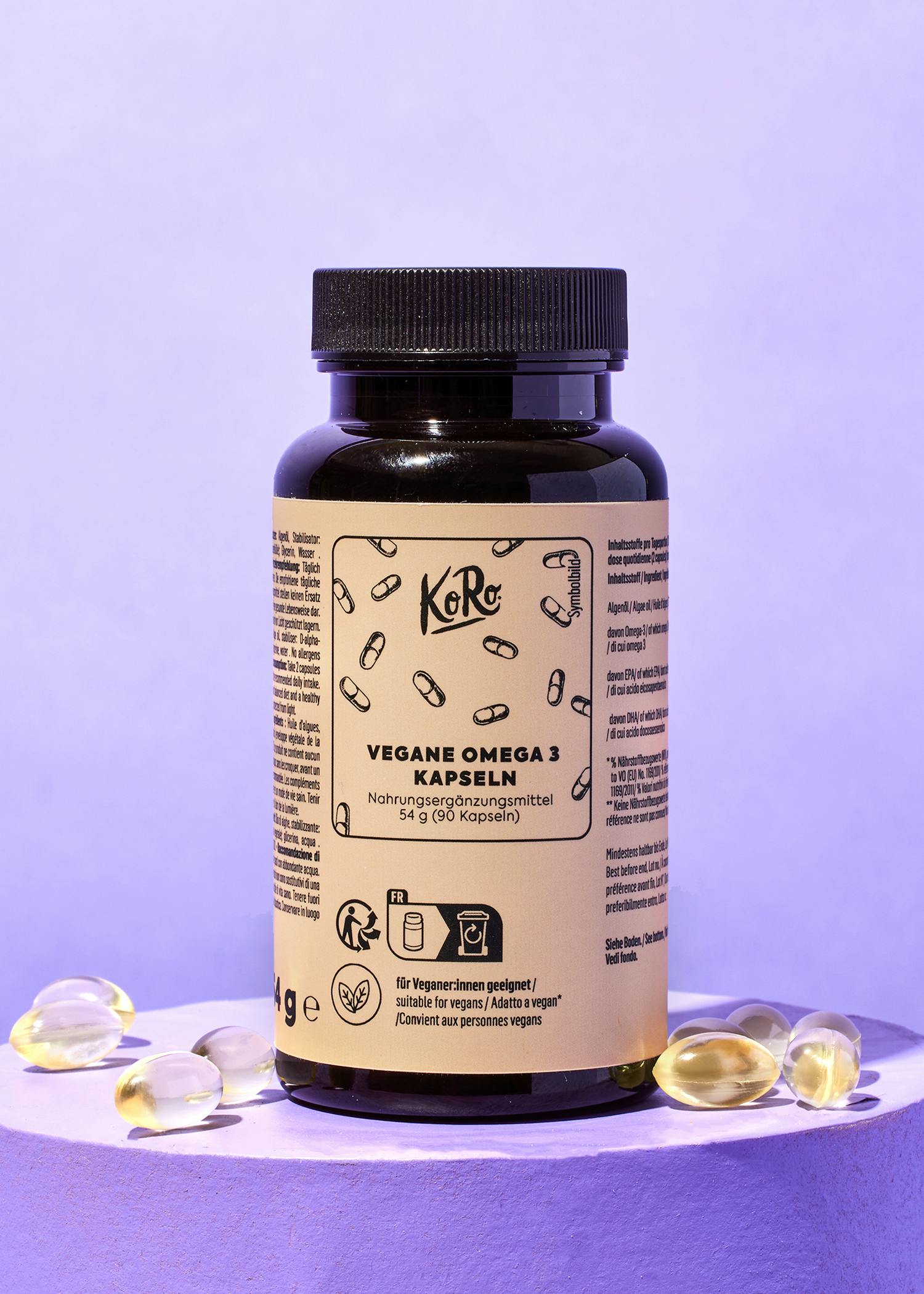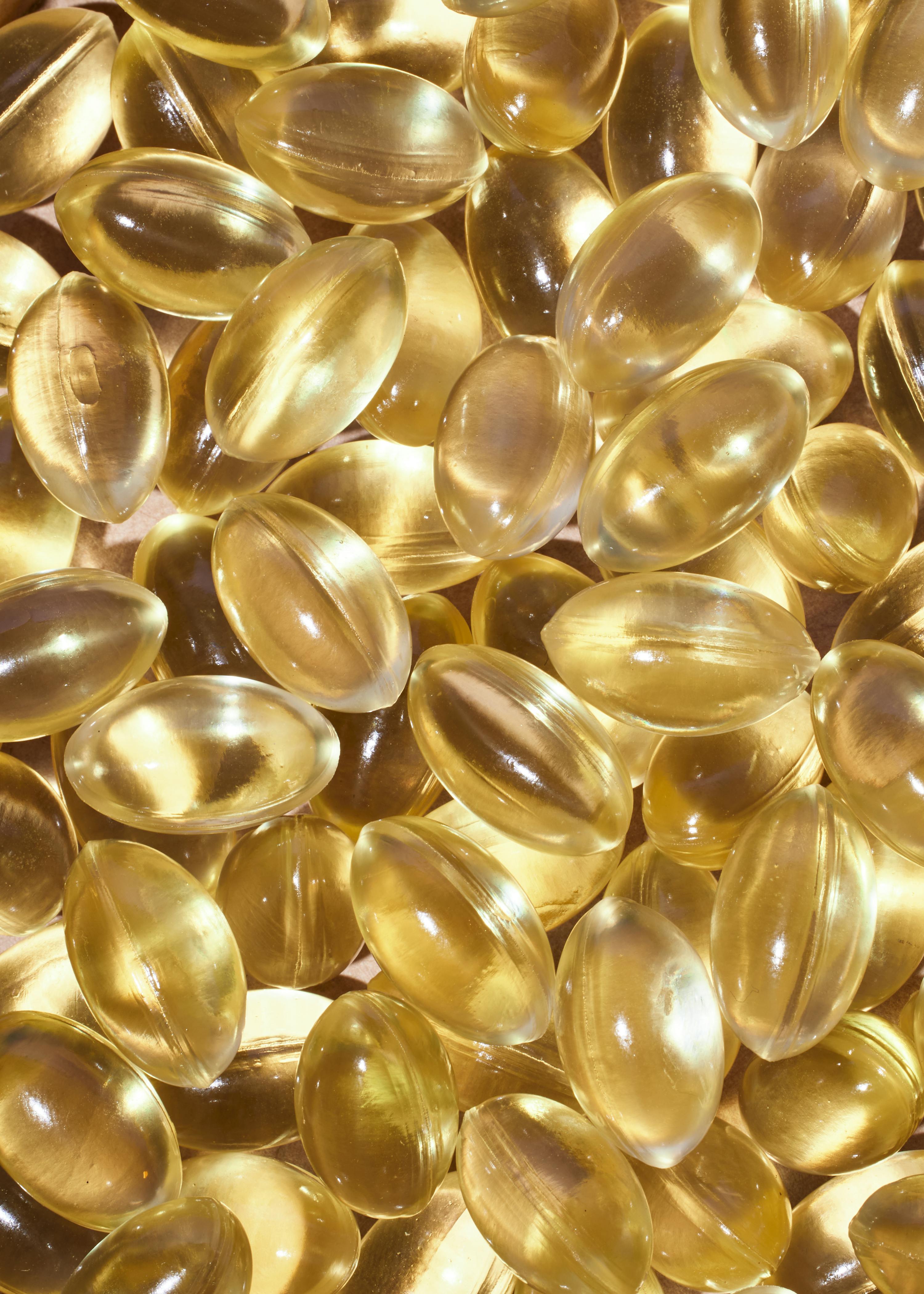
What types of fatty acids are there?
You've probably heard it before: unsaturated fatty acids are supposedly healthier than saturated fatty acids. In fact, a long-term increased intake of saturated fatty acids is classified as a risk factor for cardiovascular diseases, for example. Saturated fatty acids are mainly found in animal products such as meat or dairy products, but also in coconut oil. Unsaturated fatty acids have a better reputation. They are mainly found in vegetable oils such as olive oil, nuts and seeds. The effect of saturated and unsaturated fatty acids on the body has been known for years. Unsaturated fatty acids in particular tend to have a positive effect on health. There are monounsaturated fatty acids and polyunsaturated fatty acids. Omega-3 and omega-6 fatty acids are an important group of polyunsaturated fatty acids.
How are omega-3 and omega-6 fatty acids structured?
A little chemistry help: triglycerides, also known as triacylglycerides, make up the main component of fats in our diet. A triglyceride consists of different fatty acids and the alcohol glycerol. Put simply, fatty acids are made up of a chain of carbon atoms, some of which are connected to hydrogen atoms. In saturated fatty acids, all carbon atoms are connected to hydrogen atoms, i.e. each C atom is "saturated" by an H atom, whereas in unsaturated fatty acids some hydrogen atoms are "missing" and the carbon atoms are connected by double bonds. If one double bond is present, the fatty acid is described as "monounsaturated". If there are two or more double bonds in the fatty acid, it is "polyunsaturated".
Omega-3 and omega-6 fatty acids belong to the group of polyunsaturated fatty acids. Omega-3 and omega-6 differ in that the double bond is found on different carbon atoms in the fatty acid. Sounds pretty complicated, but it's knowledge you can certainly show off!
What are omega-3 and omega-6 good for in the body?
Both types of unsaturated fatty acids are essential components in our cell membranes, which means that we are partly made up of omega-3 and omega-6 fatty acids. Omega-3 is particularly important for inhibiting inflammation, cardiovascular health and healthy brain function. There are even indications that omega-3 fatty acids could play a role in the prevention of certain types of cancer or type II diabetes mellitus. Omega-6 fatty acids are important for regulating energy production in the metabolism as well as our bone, skin and hair health, among other things.
Flax and chia seeds as a source of omega-3?
Linseed and chia seeds contain the precursor of eicosapentaenoic acid (EPA) and docosahexaenoic acid (DHA). This is present in the form of alpha-linolenic acid (ALA). EPA and DHA are counted among the long-chain unsaturated fatty acids. ALA can be converted to EPA and DHA with the help of certain enzyme systems in the body. However, the conversion rate of ALA to EPA and DHA is so low that it is recommended that these two fatty acids are also taken in with food or a dietary supplement, e.g. algae oil or fish oil. EPA and DHA are crucial for numerous metabolic processes. For example, they have an anti-inflammatory effect, help regulate blood pressure and protect your blood vessels. You could also eat fatty sea fish such as mackerel or salmon for EPA and DHA. In a vegan diet, EPA and DHA can only be obtained from certain microalgae. However, these are not the typical sushi algae, but ones that hardly any of us have in our daily diet: Microalgae of the genus Schizochytrium species. To get enough DHA and EPA, you would have to eat a lot of fish or microalgae. For most people, the omega-3 intake from food is insufficient, regardless of the type of diet. Even if we eat a lot of linseed oil, linseed, chia seeds and the like, most of us are not sufficiently supplied with EPA and DHA. You would have to eat fatty sea fish several times a week, which is often out of the question for most people, for example for ethical reasons, financially or due to taste preference. A supplement made from algae or fish oil therefore makes sense in most cases. Incidentally, olive oil contains mainly monounsaturated fatty acids, which are also important for our health, but should not be confused with the polyunsaturated omega-3 fatty acids.
Omega-3 index or also: The ratio between omega-3 and omega-6
We can actually speak of a kind of "tense" relationship between our omega-3 and omega-6 colleagues. There are various enzymes in the body, the desaturases and elongases. Put simply, the omega-3 fatty acid ALA can be converted to EPA and DHA and the omega-6 fatty acid LA to arachidonic acid. Omega-3 fatty acids compete with omega-6 fatty acids to occupy the enzymes. So if there is a lot of omega-6, the enzymes also convert a lot of omega-6. If there was a high amount of omega-3, less omega-6 would be converted by the enzymes. So if you consume too much omega-6 in your diet, which is the case for most people nowadays, it is mainly these fatty acids that are further metabolized. Omega-3 is therefore more or less "ignored" by the enzyme systems. Omega-3 fatty acids tend to have an anti-inflammatory effect, while omega-6 fatty acids tend to be metabolized into pro-inflammatory substances. It is therefore obvious that the anti-inflammatory effect of omega-3 fatty acids is important for our health. But does that make omega-6 bad? No. Both forms of fatty acids are essential for a healthy metabolism. The ratio between omega-3 and omega-6 is important. A ratio of 3:1 to 5:1 omega-6 to omega-3 is usually recommended for the supply of fatty acids from food. The exact amount of omega-3 needed to prevent cardiovascular disease has not yet been scientifically determined. This is also due to the fact that the overall diet and the amount and type of fat consumed also play a role. For example, if someone eats a lot of saturated fatty acids from animal products, the fatty acid profile in their body looks different from that of people who eat a purely plant-based diet, regardless of their omega-3 intake. Regardless of the type of diet, our food today contains on average around 10 to 20 times more omega-6 than omega-3, which is not conducive to good health in any case. To check what the ratio of fatty acids in your body looks like, you can have a blood value, the so-called omega-3 index, determined. Ideally, this value should be 8-11%. However, the blood value is not currently covered by health insurance.
Do I need omega-3 capsules made from fish oil, krill oil or algae oil?
As already described, most people do not get enough omega-3 from their normal diet. This is why there are numerous omega-3 food supplements on the market. Omega-3 capsules or omega-3 oil are in most cases a very useful supplement to food. You can also use omega-3 oil in salads, for example. It would therefore be beneficial to consider taking a dietary supplement in addition to linseed, hemp seed and the like. This way you can better cover your EPA and DHA requirements. Of course, there are also vegan alternatives made from algae oil, which are just as high-quality as fish oil. Capsules and oils made from algae oil are even the more environmentally friendly option because they do not take the "detour" via fish. It is important to pay attention to good quality supplements, residue controls for heavy metals, for example, and a high DHA and EPA content. Fish only contains omega-3 because the animals eat microalgae containing omega-3. It is important not to use the oil for frying or baking, as the omega-3 fatty acids it contains are not heat-stable. If you stick to the recommended dose or ideally supplement based on your blood values, there is hardly any risk of overdosing. If you are unsure about the optimal amount for yourself, it is best to ask a nutritionist or dietician for advice.

